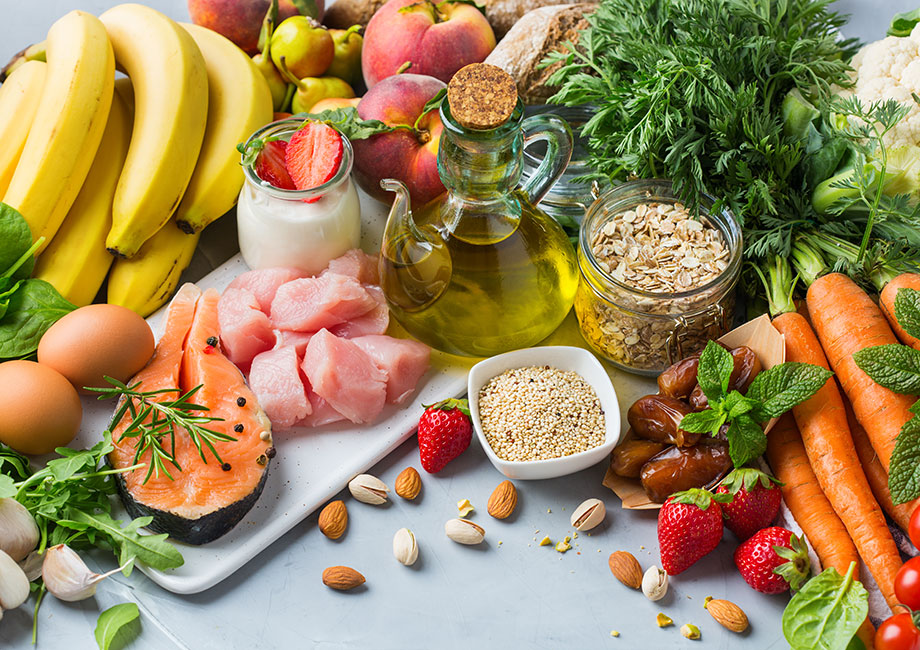Weight loss is a hot button topic in the fitness industry, with millions of Americans trying to lose weight each year—an estimated 49%, according to the CDC’s National Center for Health Statistics1.
Whether it’s through making a workout plan, counting calories, or taking up a hobby like running or walking for weight loss, many Americans want to lose a few extra pounds, which has created a large industry with plenty of programs and weight loss apps available. It’s tough to figure out which weight loss trends and programs are best and most effective, leading many people who lose weight to regain it in just a few years.
In this article, I’ll go over weight loss statistics for Americans and on a global scale, as well as what popular trends are being used and how successful they are. I’ll also provide tips on how to lose weight safely and effectively.
Key Takeaways
Before we take a deeper dive into these statistics and facts about weight loss, let’s go over some key points and takeaways.
- Each year, about 49% of Americans attempt to lose weight1.
- Studies show2 that in those who lose weight, 50% of the weight typically returns in 2 years; 80% can return within 5 years.
- According to the World Health Organization3, about 43% of adults were overweight worldwide in 2022, with another 16% considered obese.
- Last year, 55% of American women and 47% of American men said they wanted to lose weight4.
- With diabetes medicines gaining popularity, 15.5 million Americans have used Ozempic5 or other injectable diabetes medicines for weight loss.
Weight Loss in America
The obesity rate in America has been a widespread issue, and it continues to grow, with 31.6% of adults considered overweight6. Another 39.6% are considered obese. What is obesity? What about overweight vs obese? These terms are a measurement of people’s body mass index, or BMI. BMI assigns a number based on the person’s height and body weight. Numbers at or above 25 are deemed overweight, while BMIs over 30 or higher are considered obese.

The prevalence of obesity has created a lucrative industry for weight loss programs and tools. As of 2023, the weight loss industry in the United States alone was valued at $89.9 billion7.
With 49% of Americans trying to lose weight, the number of people trying to lose weight varies by age group and gender.
- According to the Center for Disease Control and Prevention, from 2013 to 2016, 56.4% of women tried to lose weight, compared to 41.7% of men1.
- In the same time span, middle-aged adults between the ages of 40 and 59 showed the most interest in losing weight, with 52.7% of the demographic attempting to shed some weight1.
- 49.7% of young adults (20 to 39 years of age) tried to lose weight in the same period, and only 42.7% of older adults over 60 tried to lose weight1.
Of the Americans with overweight who attempt to lose weight, about 20% of them are successful at long-term weight loss8. That statistic includes those who lost 10% of their body weight and maintained the weight loss for one year.
How Are People Losing Weight?
With a nearly $90 billion industry dedicated to weight loss, Americans have a variety of ways to try to lose weight. Options include diet and exercise, starting running or other physical activities, or trying medication or supplements to help lose weight.

However, some popular methods aren’t as safe or healthy as others. Before making drastic changes to your diet and exercise routine, consult a healthcare professional or dietitian to learn the best method for your personal fitness journey.
With that in mind, here are some common tactics people have used to try to lose weight, as well as the percentage of people incorporating them into their weight loss journey1.
- Exercise and eating less are the most common tactics, with 62.9% of people doing each.
- 50.4% of people try to lose weight by consuming more fruits and vegetables.
- Some try to up their water intake—44.7% of people, to be exact.
- 42.4% of people clean up their diet by cutting down on fast food and junk food.
- 38.7% of those trying to lose weight change their eating habits overall.
- Many people (38.6%) cut back on sugar to try to help with their weight loss.
- 35.3% of people have swapped their normal foods for lower-calorie options.
- 30.4% of dieters lowered their carb intake, while 29.2% ate less fat, using low-fat alternatives.
Another common tactic for weight loss is taking weight loss supplements and medicines. A popular medication for weight loss currently is injectable diabetes medicine, such as Ozempic. This really began to gain traction when some celebrities openly admitted to using Ozempic or similar medications like Wegovy to help them lose weight.
Although Ozempic isn’t FDA-approved for weight loss (it is approved for the treatment of type 2 diabetes), the active compound in the medicine—semaglutide—has been approved in other medications like Wegovy for weight loss.
According to a 2024 Gallup poll5, 15.5 million Americans have used Ozempic or similar injectable medications for weight loss. Six percent of Americans have used semaglutide for weight loss in the past, while 3% are current users who are using it for weight loss. Of Ozempic and Wegovy users, more women use it than men.
How to Lose Weight
Many Americans want to lose weight, but with so many options and weight loss programs for women and men, it’s hard to decide the best route to take. The other issue is how often people can “rebound” after a diet and deal with weight gain all over again. Here are some strategies to consider when trying to lose weight and maintain your weight loss. As always, consult a professional before making drastic changes to your routine.

First, start by keeping things simple. In order to lose weight, you need to be in a calorie deficit: burning more calories than you consume. For most people, this means prioritizing whole foods (as processed foods tend to be more calorically dense and easier to overeat) and increasing energy expenditure through exercise. That exercise can be primarily strength training, cardiovascular workouts, or a healthy mix of both—whatever routine you’ll want to stick to will reap the most health benefits.
RELATED: How Much Cardio to Lose Weight?
Many fad diets, like high-fat, low-carb keto diets, restrict entire macronutrients, which might be effective in your initial weight loss. However, getting off that diet and adding those foods back into your daily intake might cause you to put weight back on. Instead, think of a diet as simply a way of eating, not a quick fix. You should be able to maintain your diet for the long term, as diets that don’t restrict certain foods are often more sustainable for weight management in the long run.
Here are some other quick tips for healthy and manageable weight loss:
- Pick exercises and activities you enjoy. These will help you stay invested in your workouts.
- Track your macronutrients—protein, carbohydrates, and fats—until you find your rhythm for healthy eating. This can help you realize what nutrients you get the most of and make it easier to make minor adjustments to get you closer to your goals.
- Eat high-protein foods for weight loss. A high protein intake helps keep you satiated, and will also help you maintain lean muscle mass as you lose body fat.
- Find accountability, either through a friend or a weight loss program or app. These programs can set you up with a coach or provide robust communities that offer support and answer questions to help nudge you in the right direction.
- Work with an expert. If you’re still not sure where to start, find a registered dietitian or a certified personal trainer to help guide you through your fitness journey.

Weight Loss Statistics: Final Thoughts
Maintaining a healthy weight can improve your physical and mental health. But with over 70% of Americans considered overweight or obese, there are real concerns about severe obesity-related illnesses and risk factors, such as type 2 diabetes, kidney disease, high blood pressure and cholesterol, heart disease, or stroke. However, many people aren’t sure of the best method to lose weight.
The best thing to do before starting your weight loss and fitness journey is to consult specialists. Talk to your doctor, a dietitian, or a personal trainer to find the best path for you to take to help you achieve a healthy lifestyle and accomplish your weight loss goals—and keep the weight off.
Weight Loss Statistics: FAQs
What is the success rate of typical weight loss?
Unfortunately, the success rate of weight loss and weight maintenance isn’t too great. According to Michigan Medicine9, 90% of people who lose weight will gain the weight back. In order to lose weight and keep it off, it’s important to follow a workout plan, eat in a caloric deficit, and be consistent with your physical activity and nutrition.
RELATED: Best Online Workout Programs
What is the 30/30/30 rule for weight loss?
The 30/30/30 rule for diet and weight loss is fairly simple; it involves waking up and ingesting 30 grams of protein within 30 minutes. Afterward, you perform 30 minutes of low-intensity exercise. While there’s no real evidence or research to support that this rule leads to weight loss or weight control, it can be a good tactic to gain consistency in a morning workout routine—which could be helpful in your weight loss journey.
What percentage of people lose weight permanently?
According to a 2005 study8, the weight loss success rate is about 20% for people who are able to keep the weight off.
How many Americans are on weight loss drugs?
According to a 2024 Gallup poll5, around 6% of Americans are on weight loss drugs, such as Ozempic or Wegovy.
References
- Martin, C.B., Herrick, K.A., Sarafrazi, N., & Ogden, C.L. (2018). Attempts to lose weight among adults in the United States, 2013-2016. NCHS Data Brief, no 313. Hyattsville, MD: National Center for Health Statistics.
- Hall, K. D., & Kahan, S. (2018). Maintenance of Lost Weight and Long-Term Management of Obesity. The Medical clinics of North America, 102(1), 183–197. https://doi.org/10.1016/j.mcna.2017.08.012
- World Health Organization. (2024). Obesity and overweight. World Health Organization. https://www.who.int/news-room/fact-sheets/detail/obesity-and-overweight
- Elflein, J. (2024). Percentage of U.S. adults who wanted to lose weight from 1951 to 2023, by gender. Statista. https://www.statista.com/statistics/1305139/percentage-of-us-adults-who-wanted-to-lose-weight-by-gender/
- Menezes, D. & Martichoux, A. How many people use injectable weight loss drugs? Fox59, 2024. https://fox59.com/news/national-world/how-many-people-use-injectable-weight-loss-drugs/
- Food Research and Action Center. (n.d.). Obesity in the U.S. Food Research and Action Center. https://frac.org/obesity-health/obesity-u-s-2
- LaRosa, J. (2024). U.S. Weight Loss Industry Grows to $90 Billion, Fueled by Obesity Drugs Demand. Market Research, 2024. https://blog.marketresearch.com/u.s.-weight-loss-industry-grows-to-90-billion-fueled-by-obesity-drugs-demand
- Wing, R. R., & Phelan, S. (2005). Long-term weight loss maintenance. The American journal of clinical nutrition, 82(1 Suppl), 222S–225S. https://doi.org/10.1093/ajcn/82.1.222S
- Runge, M.S. (2017). Weighing the Facts: The Tough Truth About Weight Loss. Michigan Medicine. University of Michigan, 2024. https://www.michiganmedicine.org/health-lab/weighing-facts-tough-truth-about-weight-loss







